Advertisement
Working with strings in Python is one of those things you end up doing more often than you expect. Whether it's putting together a full name, formatting a message, or building a larger block of text, string addition plays a role in all of it. Python gives several options to combine strings, and which one you choose depends on the situation. Some are straightforward, others are a bit more readable, and a few offer more flexibility when working with variables or large datasets. Let's go through all the ways you can add strings in Python, so you know what your options are and when each method fits naturally into your code.
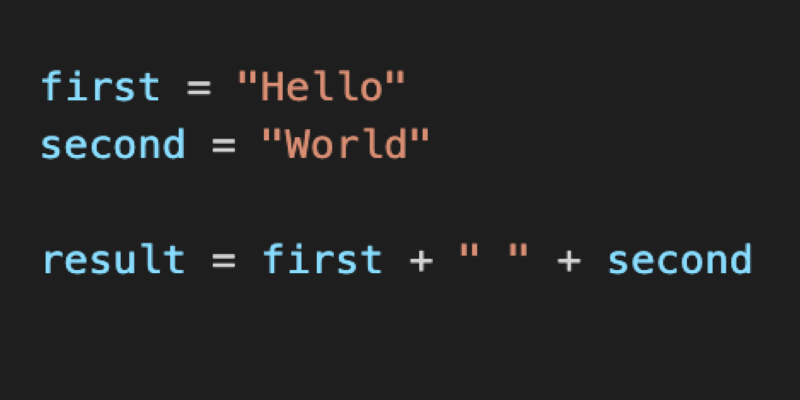
The + operator is the most direct way to add strings. You place it between two strings, and it returns a new string that is the combination of both.
python
CopyEdit
first = "Hello"
second = "World"
result = first + " " + second
print(result)
This approach is simple and easy to follow. If you’re working with just a few values or writing quick scripts, this is often the way to go. However, if you’re inside a loop or adding many strings, it can become inefficient, as each addition creates a new string object in memory.
When combining many strings, especially from a list, .join() is much more efficient than the plus operator. It takes an iterable and joins its elements with the string you call it on.
python
CopyEdit
words = ["Python", "is", "fun"]
result = " ".join(words)
print(result)
You can use any separator: a space, comma, newline, or even an empty string if needed. It's especially useful when reading input from files or handling data from user input, where the number of items isn't fixed.
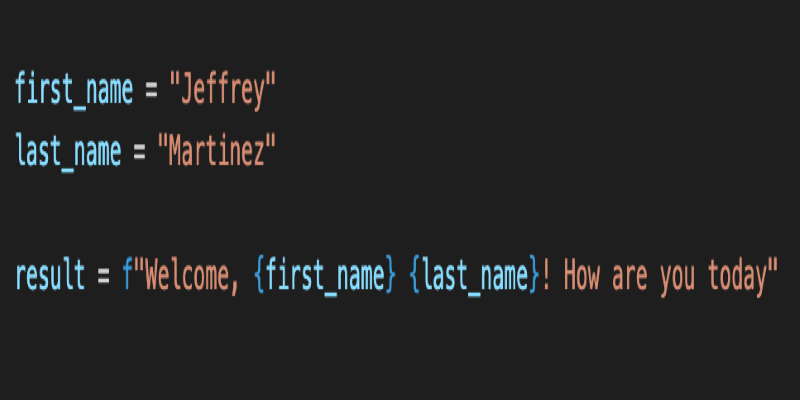
f-Strings make it easy to plug variables into strings. Introduced in Python 3.6, this approach lets you embed expressions directly inside a string by prefixing the string with f and using curly braces for variables.
python
CopyEdit
name = "Alex"
greeting = f"Hello, {name}!"
print(greeting)
This method works not just for string addition but also for clearly formatting values. You can also include expressions, which gives more flexibility without leaving the string itself.
Before f-Strings, .format() was a common choice. It’s still supported and useful, especially if you're working with older Python versions. It replaces {} placeholders with the corresponding arguments.
python
CopyEdit
first = "Alice"
second = "Bob"
result = "{} and {} are coding.".format(first, second)
print(result)
You can also assign names to placeholders for readability or reuse the same variable in multiple places.
python
CopyEdit
result = "{user} likes {lang}. {user} codes daily.".format(user="Tom", lang="Python")
print(result)
This is an older way of formatting strings, but it is still used occasionally. It uses % symbols as placeholders, like in C-style languages.
python
CopyEdit
name = "Dana"
result = "Hello, %s!" % name
print(result)
You can format multiple values using a tuple:
python
CopyEdit
first = "sunny"
second = "beach"
result = "It’s a %s day at the %s." % (first, second)
print(result)
While functional, it's generally replaced by f-Strings or .format() in most codebases, but it still comes up in legacy code or simple print formatting.
If you're collecting strings inside a loop using the + operator, it works, but it’s not efficient for large data. It’s better to use .append() on a list and .join() at the end.
python
CopyEdit
# Not the best way
text = ""
for word in ["Python", "is", "fast"]:
text += word + " "
print(text.strip())
This builds a new string each time, which slows things down. It works fine for small amounts of text, but it is not memory-friendly for larger loops.
When building a string from multiple parts in a loop, it's better to collect them in a list and then use .join().
python
CopyEdit
parts = []
for i in range(5):
parts.append("Line " + str(i))
result = "\n".join(parts)
print(result)
This is cleaner, and Python handles it more efficiently under the hood, especially when processing large files or repeated inputs.
If you're doing a lot of additions over time or creating a string that grows based on conditional logic, use io.StringIO is another option. It behaves like a file, but it writes to memory, not disk.
python
CopyEdit
from io import StringIO
buffer = StringIO()
buffer.write("Hello")
buffer.write(" ")
buffer.write("World!")
result = buffer.getvalue()
print(result)
This is more common in situations like web frameworks, templates, or large-scale string building, where efficiency matters. It's not needed for simple scripts, but it's good to be aware of.
This is a shortcut for x = x + y. It works the same way as using +, but often makes the intent more clear, especially inside functions or loops.
python
CopyEdit
sentence = "Python"
sentence += " is"
sentence += " awesome"
print(sentence)
As with regular +, though, this still creates new string objects with each addition, so while readable, it’s not ideal for large-scale use.
Python’s string module includes Template strings, which let you substitute variables using $ placeholders. This method is helpful if you’re dealing with user-defined templates or want to avoid evaluating expressions within your format.
python
CopyEdit
from string import Template
template = Template("Hello, $name!")
result = template.substitute(name="Sam")
print(result)
Unlike f-Strings, this doesn’t allow expressions inside the placeholders. It's simple, safe, and comes in handy when working with inputs from outside the code.
Python makes it easy to add strings in multiple ways, from the straightforward + operator to more structured tools like join, f-Strings, or even StringIO when things scale. Knowing which one fits your context helps keep your code clean and efficient. Use + or f-Strings when you’re dealing with a few pieces. Switch to join or StringIO when you're working with many. Once you know the purpose of each method, choosing the right one becomes second nature.
Advertisement
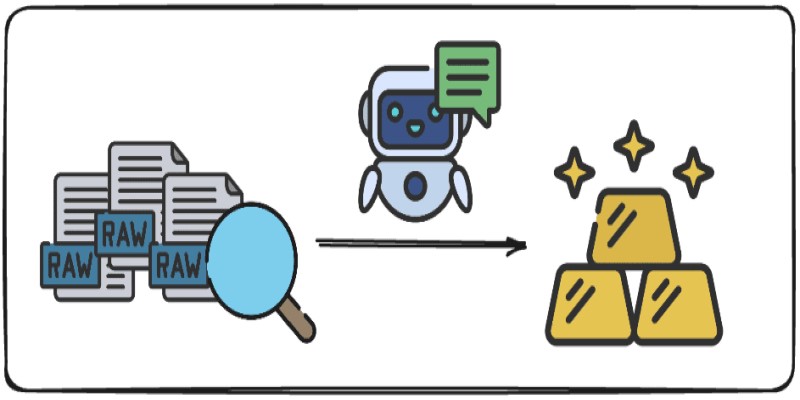
Want to turn messy text into clear, structured data? This guide covers 9 practical ways to use LLMs for converting raw text into usable insights, summaries, and fields

Compliance analytics ensures secure data storage, meets PII standards, reduces risks, and builds customer trust and confidence

Discover how Getty's Generative AI by iStock provides creators and brands with safe, high-quality commercial-use AI images.

Looking for quality data science blogs to follow in 2025? Here are the 10 most practical and insightful blogs for learning, coding, and staying ahead in the data world

Anthropic faces a legal battle over AI-generated music, with fair use unlikely to shield the company from claims.
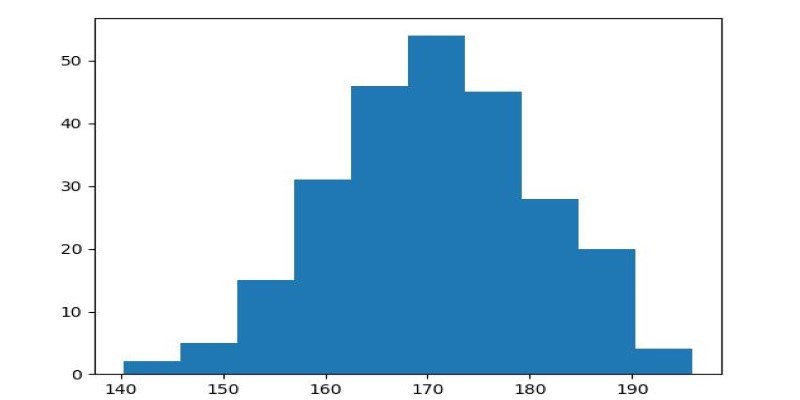
How to use Matplotlib.pyplot.hist() in Python to create clean, customizable histograms. This guide explains bins, styles, and tips for better Python histogram plots

Explore effective ways for scatter plot visualization in Python using matplotlib. Learn to enhance your plots with color, size, labels, transparency, and 3D features for better data insights

Create user personas for ChatGPT to improve AI responses, boost engagement, and tailor content to your audience.

Looking for the best AI resume builders? Check out these 10 free tools that help you craft professional resumes that stand out and get noticed by employers
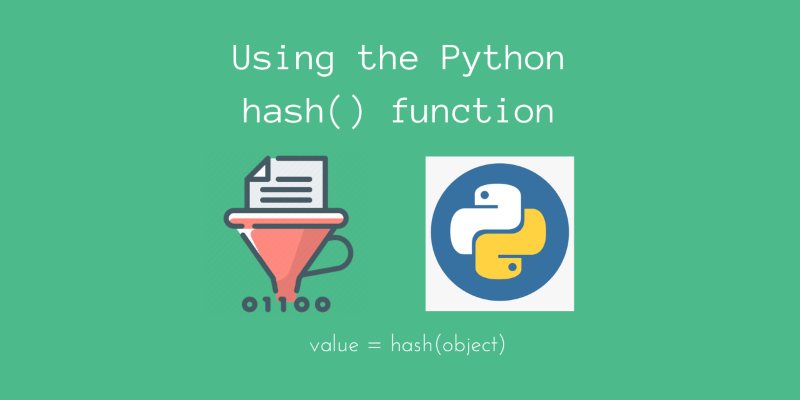
Learn how logic gates work, from basic Boolean logic to hands-on implementation in Python. This guide simplifies core concepts and walks through real-world examples in code

Looking to turn your images into stickers? See how Replicate's AI tools make background removal and editing simple for clean, custom results

Understand the real differences in the relational database vs. graph database debate. Explore structure, speed, flexibility, and use cases with real-world context